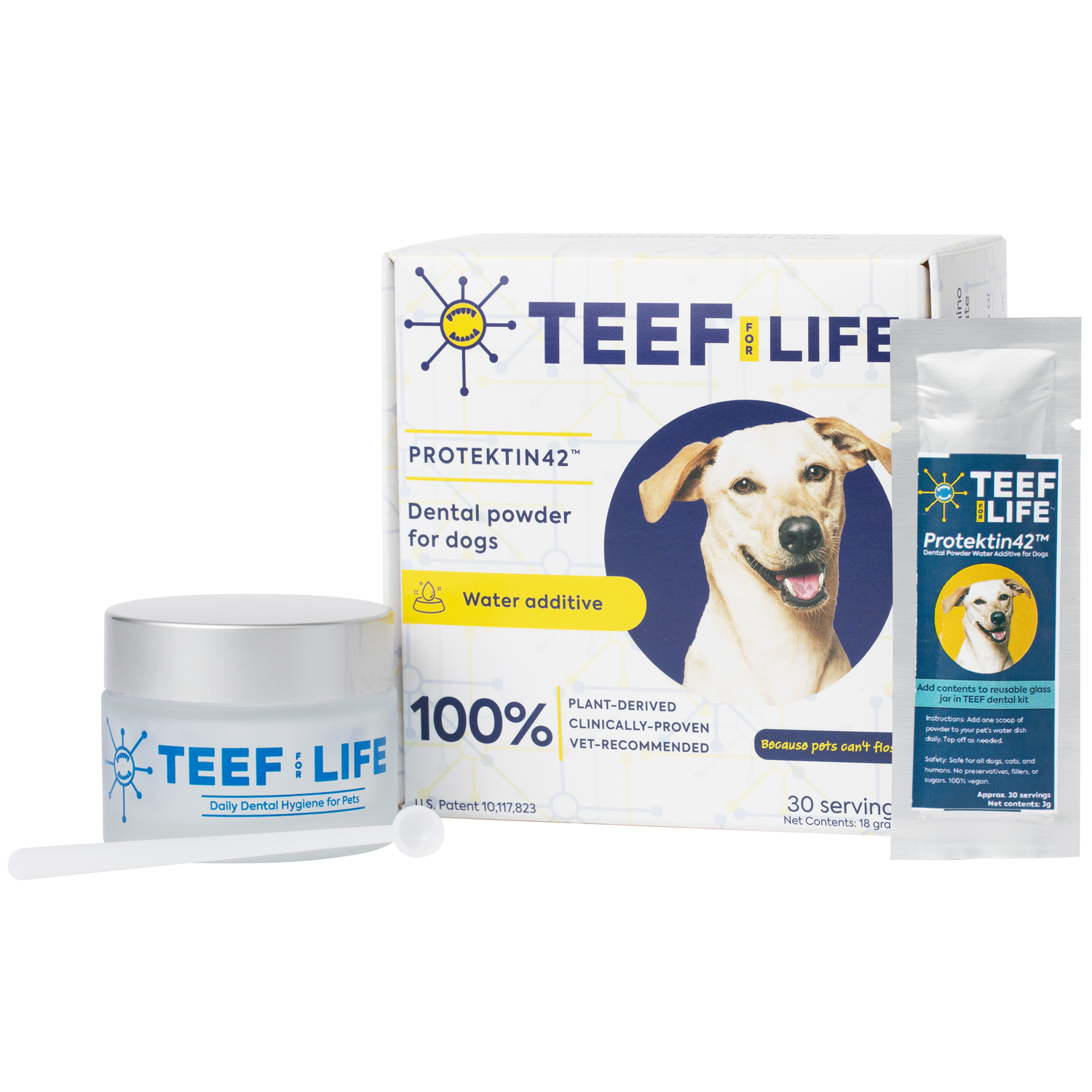As a microbiologist, a former rheumatology research scientist and a dog and cat mom, I will summarize what I have learned as the “worst offenders” in dental products for dogs and cats.
First, you need to know a little about the underlying cause of dental diseases, which is dysbiosis.
Oral dysbiosis is either: (i) too many inflammation-causing microbes and not enough beneficial microbes in the mouth, or (ii) not enough diversity in the microbial population in the mouth.
Lack of diversity can lead to problems (too much of one good thing) can be problematic OR too many microbes (flora + probiotics) can overwhelm the system.
The end result of all of these dysbiosis scenarios = inflammation, which is the body’s alarm system. If dysbiosis persists, it leads to longer-term inflammation, which can trigger dental diseases.
Old approaches to dental hygiene tend to use the “kill them all” approach. They use antiseptics, which are toxic to very durable bacteria and some fungi.
1. Toxic Chemicals/Antiseptics
Many dental products on the market contain antiseptics (such as cetylpyridinium chloride, chlorhexidine, triclosan, chlorine dioxide, etc.), which have temporary benefit because they kill all microbes, bringing the total amount of dental bacteria down for several hours. When used daily, antiseptics can temporarily drop the dental bacteria down in amount, but they always rebound when the antiseptic drops below a certain concentration. The biggest issue for dental health is that antiseptics don’t alter the underlying problem - dysbiosis. In our studies, dogs and cats being fed antiseptic containing dental chews or drinking antiseptics doesn’t improve dysbiosis. The biggest issue for your pet’s overall health is that many antiseptics can damage your pets’ oral and lower gut epithelial cells, DNA and/or mitochondria, which can lead to malabsorption, metabolic conditions or cancers.
Triclosan, found in some pet dental products, was removed from human dental products by the FDA due to safety concerns. According to the FDA, chlorhexidine use should be very limited to only two weeks of use due to neurotoxicity and is not to be ingested (i.e., dental chews). Importantly, decades of research show that a diverse, healthy microbial flora is required for good oral and gut health.
So, why are antiseptics still used? Because they are effective at reducing plaque and tartar making teeth whiter - a visual change that appeals to many pet parents. But gum disease can still exist without any plaque or tartar. I am more concerned with the long-term health of my dog and cats, so I look for, and create products that promote a balanced and diverse oral microbiome, that keep my pets’ gums healthy and maintain healthy tooth plaque.
2. Artificial flavors and Preservatives
The use of flavors to cover up bad breath from dental problems is a trend, particularly in dental chews. But ethically, this is a trend I struggle with. No one likes to smell bad breath. Full stop. But using products that claim to conceal a dog’s bad breath can delay a much-needed vet visit and importantly, will not help the underlying dental disease problems, which are microbial.
Also, a recent trend in dental water additives is the use of high amounts of preservatives to treat dental plaque. Ingredients such as sodium benzoate or potassium benzoate are the most common ones. These are bacteriostatics, which means these chemicals stop all bacteria from growing and most importantly, the beneficial bacteria from growing too. Pets seem to tolerate high amounts of benzoates but we do not yet know the long-term side effects when consumed daily.
3. Carbohydrates (sugars)
There is an increase in the use of honey, which has antimicrobial properties, in dental chews. The problem with honey is that the beneficial aspects of honey get denatured during the baking or heated extrusion processes – leaving only the sugar, which is a significant food source for dental and gut pathogens, contributing to dysbiosis. The use of grains (corn, wheat, brewer’s rice) or alternative carbohydrates (chickpea, sweet potato, potato starch, etc.) as the major hardening/chew agent in dental chews is antithetical to dental health. Dentists and dental hygienists have known for decades that eating processed carbohydrates often leads to cavities and gum disease in children and adults. The same is true for dogs and cats. The reason? Oral bacteria love carbohydrates ---especially the microbes that cause dental disease. One of the by-products of microbial sugar metabolism is acid, which upsets gut permeability and causes inflammation.
So, what can you do?
It is imperative to avoid daily use of dental products and foods that contain antiseptics, preservatives and disease-inducing carbohydrates. Instead, opt for dental products and foods that are protein-rich, so as to steer the metabolic activity of the dental microbes towards neutralizing by-products, which is anti-inflammatory. This will counteract the inflammatory acids produced by disease-causing dental bacteria.
Also, if feeding raw, choose products that are dehydrated or frozen in order to reduce the preservatives content. Products like meat jerky and bully sticks are chewy and hardened and can help to stimulate blood flow in the gingival tissues when your pet chews. Stimulation of blood flow in the gum tissues, as well as saliva production, help remove microbial toxins and acids from the oral cavity.
Use natural, plant-based products that contain prebiotics, postbiotics (beneficial microbial by-products), and clinically-proven live dental probiotics that are specifically formulated to drive the microbiome towards health-promoting outcomes.



